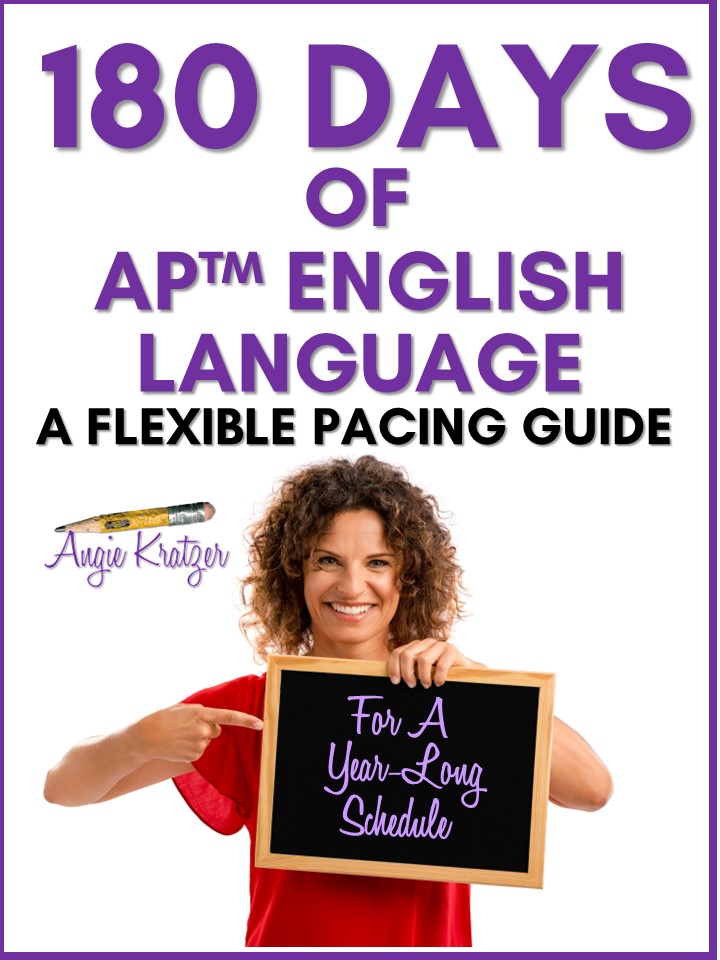Why get a baseline?
- The teacher needs to know students’ strengths and weaknesses for content planning.
- The teacher needs to know students’ strengths and weaknesses for logistical planning (pairs, groups, etc.).
- The baseline will serve as a point of comparison to show growth at the end of the term.
- The baseline will help the teacher get to know students better.

What should they write for the baseline?
The mode in which students write will be dictated by the goal of the assignment. Here are some examples of the thinking that might go into prompt creation or selection:
Goal 1: Introduction
If the goal of the baseline is primarily to get to know the students better and secondarily to assess their mechanical and organizational skills, give a narrative prompt. Even if narrative writing is not one of that grade level’s standards, narration is accessible for all secondary students as a way for them to introduce the teacher to their writing skills. Filter the prompt ideas through a poverty filter; students at a Title I school did not go to the Caribbean over the summer, so stay away from the “What I Did This Summer” option. Filter the prompt through the trauma filter; students may have lost family members to COVID-19, so a prompt that pokes that bear may do more harm than good. If narration is the mode, keep it light or offer choices.
Goal 2: Planning
If the goal of the baseline is primarily to inform instructional planning, then go with the mode in which students will be writing. See where they are. If the standards are heavy on argumentation and persuasion, give students a prompt that assesses those skills.
Goal 3: Demonstration of Growth
If the goal of the baseline includes demonstrating growth in defense of a grade or in preparation for an assessment, choose the most challenging mode from the assessment. What I have in mind is the AP English Language & Composition Exam, which requires students to respond to synthesis, rhetorical analysis, and argument prompts. For my AP Lang students, the baseline is rhetorical analysis. If your program recruits the cream of the crop and you expect the group will be strong, go with a prompt that requires catching subtleties (like the 1992 Wordsworth-Lamb letter). If you think you’ll need something with anchor papers, use one of the 2020 prompts.
How do I get a baseline virtually?
- Decide if you want it to be timed. If you use a prompt with a passage, do you want to give students ample time to grapple with the text? Are you willing to risk cheating?
- Create the prompt in a format that will work with your LMS, get a PDF of the prompt, or get a link to it. I would go with a one-page PDF or the prompt on a Google App. A link runs the risk of taking students to anchor papers.
- Set a time for synchronous work. For example, you sent the prompt or a link to the prompt at 1:00, and a response to the prompt has to be shared in your school’s LMS by 2:00.
- Not worried about cheating? Give students the prompt, parameters about formatting and turnaround time, and set a deadline for the essay to make it back to you via your school LMS or email.
Not sure what I mean by MODE? Read more about ways to approach these different types of writing.
Then what do I do?
- Most importantly, THIS ASSIGNMENT IS NOT FOR A GRADE. You haven’t taught them anything yet, so you can’t assess the skills as if you have. If you’re compelled to give credit for completion or following instructions, know that you will be grading behavior, not skills.
- As you’re reading the essays, keep a running list of strengths and weaknesses. Use the list to think through student pairings, groups, and whole-group lesson plans.
- Discuss overall strengths and weaknesses with the class.
- Decide if there is any value in sharing individual feedback at this point with students.
- If one end goal is encouragement before a standardized writing test, score the essays using a student-friendly version of the rubric. There is a student friendly Question 2 rubric within Rhetorical Analysis for Every Student, my 27-lesson RA unit.
- Just before the exam, come back to this essay and show students the difference in their skills. The comparison will serve as an encouragement to them before they head into the test.



